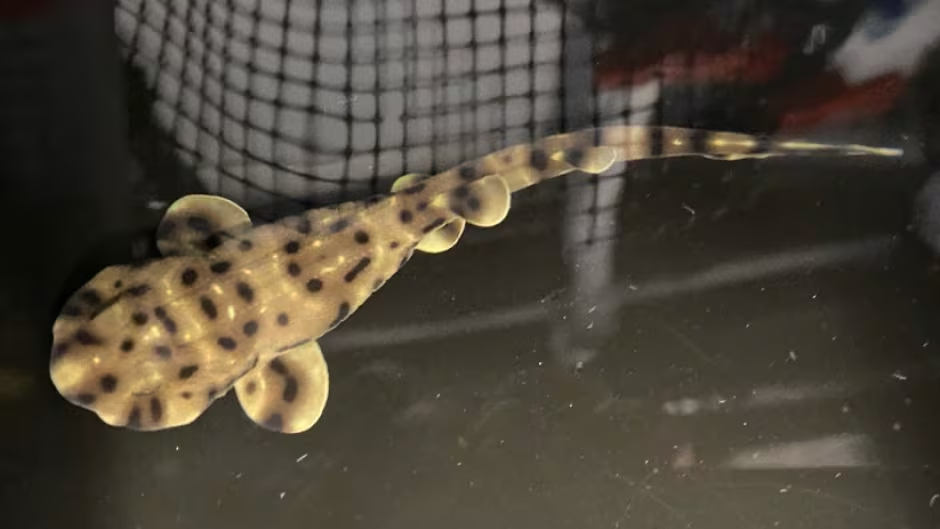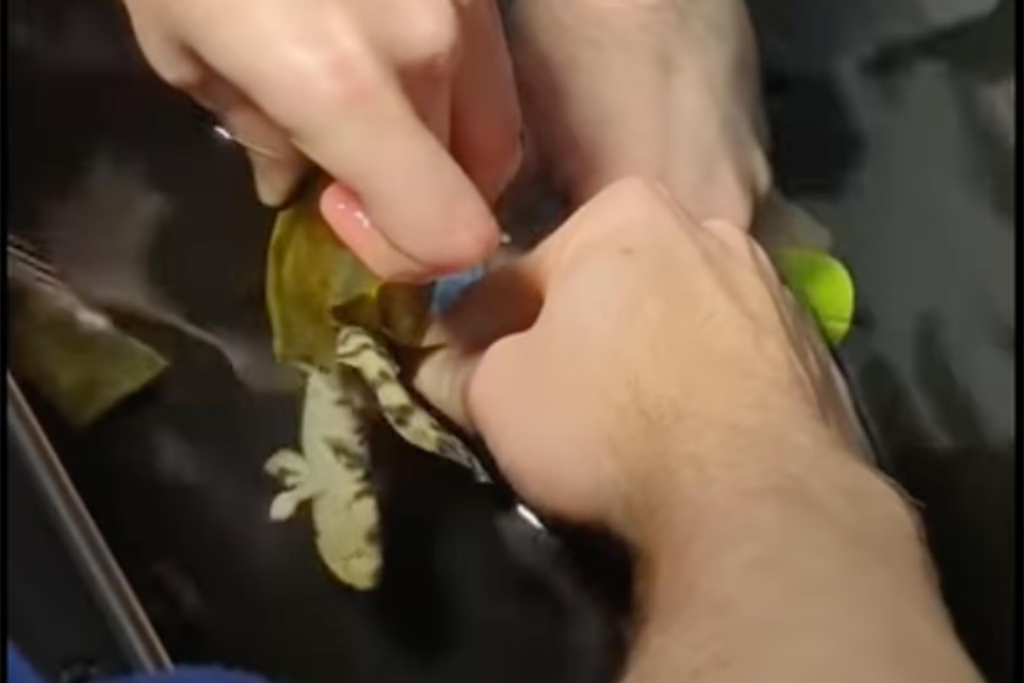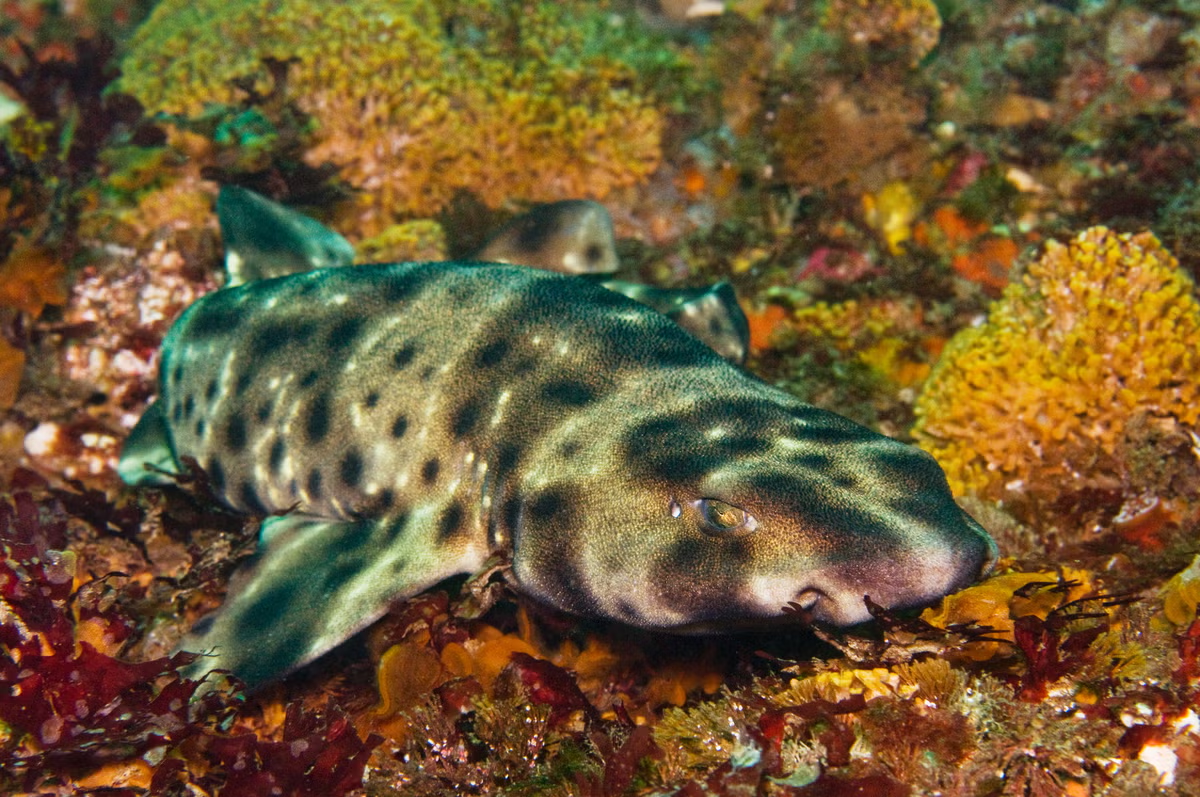The Shreveport Aquarium in Louisiana has recently become the center of scientific fascination and public intrigue following the mysterious birth of a baby shark named Yoko.
The peculiarity lies in the fact that baby shark was born in a tank inhabited exclusively by female swell sharks. This unexpected event has sparked discussions around unusual reproductive phenomena, bringing attention to the mysteries of shark biology. As experts seek answers, the aquarium has embraced Yoko as both a star attraction and a unique case for scientific study.
The Mystery of Yoko’s Birth
On January 3, 2024, Yoko the swell shark hatched in a habitat containing only female sharks. Her mother, whose identity remains uncertain, had not interacted with a male shark in over three years. This unexpected birth left the aquarium staff and scientists puzzled, as conventional reproduction would require the presence of a male.
There are two primary theories that scientists are exploring to explain Yoko’s existence: delayed fertilization and parthenogenesis.
Delayed fertilization refers to a phenomenon where female sharks store sperm in their oviducal glands for extended periods, allowing fertilization to occur long after mating. This rare ability has been observed in some shark species, such as the brownbanded bamboo shark, which gave birth nearly four years after its last contact with a male.
Read : Mermaid of Xishuangbanna Primitive Forest Park Attacked by Giant Fish: Watch
The alternative explanation, parthenogenesis, is even more fascinating. Parthenogenesis is a form of asexual reproduction in which a female produces offspring without male genetic contribution. In such cases, the offspring are genetic clones of the mother.
Read : Horrifying Video Shows Seawater Turning Red as Shark Attacks Four People at South Padre Island in US
While this phenomenon is exceedingly rare in the animal kingdom, it has been documented in certain vertebrates and plant species. Among sharks, parthenogenesis has been observed in species like the zebra shark, bonnethead, and whitespotted bamboo shark, though it is typically considered a last resort for gene propagation in the absence of males.
Investigating the Science Behind Yoko’s Birth
To determine the exact cause of Yoko’s birth, genetic testing will be conducted when she reaches a suitable size for a blood draw. This testing will involve karyotyping, a method that examines the size, shape, and number of chromosomes to identify whether the genetic material matches that of her tank mates.
Kevin Feldheim, a shark reproduction expert at Chicago’s Field Museum, highlighted that both delayed fertilization and parthenogenesis are plausible in Yoko’s case.
Female sharks are known to store sperm, but the duration of storage varies significantly between species and remains poorly understood. The longest documented case involved a female bamboo shark that retained viable sperm for 45 months.

Parthenogenesis, on the other hand, is a biological marvel with profound implications for conservation and species survival. Though rare, it has been recorded in multiple shark species, particularly in controlled environments like aquariums.
Only one wild instance of parthenogenesis has been documented, in the critically endangered smalltooth sawfish. The mechanisms that trigger parthenogenesis remain a mystery, but scientists theorize it may be a survival strategy in situations where females are isolated from males.
Despite its intrigue, parthenogenesis presents challenges. Offspring born through this process, known as parthenotes, often struggle to survive or reproduce.
While some species, like the whitespotted bamboo shark, have successfully reached sexual maturity through parthenogenesis, others, such as zebra sharks, have failed to survive beyond infancy. Yoko’s future, therefore, remains uncertain, but her birth has already contributed to the growing body of knowledge on this rare reproductive phenomenon.
Yoko’s Legacy and the Future of Shark Conservation
Yoko’s arrival has captivated audiences and brought attention to the resilience and adaptability of sharks. Though currently in quarantine, Yoko has become a social media sensation, with the Shreveport Aquarium sharing regular updates about her progress.
Plans are underway to move her to a larger exhibit once she is old enough, allowing visitors to witness this extraordinary example of nature’s ingenuity.

Regardless of how long Yoko survives, her story has significant implications for shark conservation and reproduction research. Understanding phenomena like delayed fertilization and parthenogenesis can provide insights into how certain species adapt to environmental challenges, including declining populations and habitat loss.
Such knowledge is crucial as many shark species face threats from overfishing, climate change, and habitat degradation. Moreover, Yoko’s birth underscores the importance of aquariums and research institutions in studying and conserving marine life.
Controlled environments allow scientists to observe rare occurrences and gather data that would be nearly impossible to collect in the wild. Yoko’s case is a testament to the value of these efforts, offering a glimpse into the extraordinary ways life can persevere.
As scientists continue to study Yoko, her story will undoubtedly inspire curiosity and wonder about the natural world. Whether she represents a case of delayed fertilization or parthenogenesis, her existence challenges our understanding of reproduction and highlights the remarkable adaptability of sharks.
Yoko has already left an indelible mark on the scientific community and the public, proving that life, in the words of the Shreveport Aquarium’s curator, “finds a way.”

